The Grand Canyon isn’t just one of those places you check off a bucket list — it’s a natural wonder that completely changes depending on how you experience it. Sure, you could snap a quick photo from the South Rim and call it a day, but you’d be missing out on some truly incredible perspectives that most visitors never even know exist.
From floating down the Colorado River to watching the sunrise paint the canyon walls in impossible shades of red and gold, there are countless ways to connect with this geological masterpiece. Here’s a list of 15 cool ways to see the Grand Canyon that’ll give you stories worth telling for years to come.
South Rim Trail
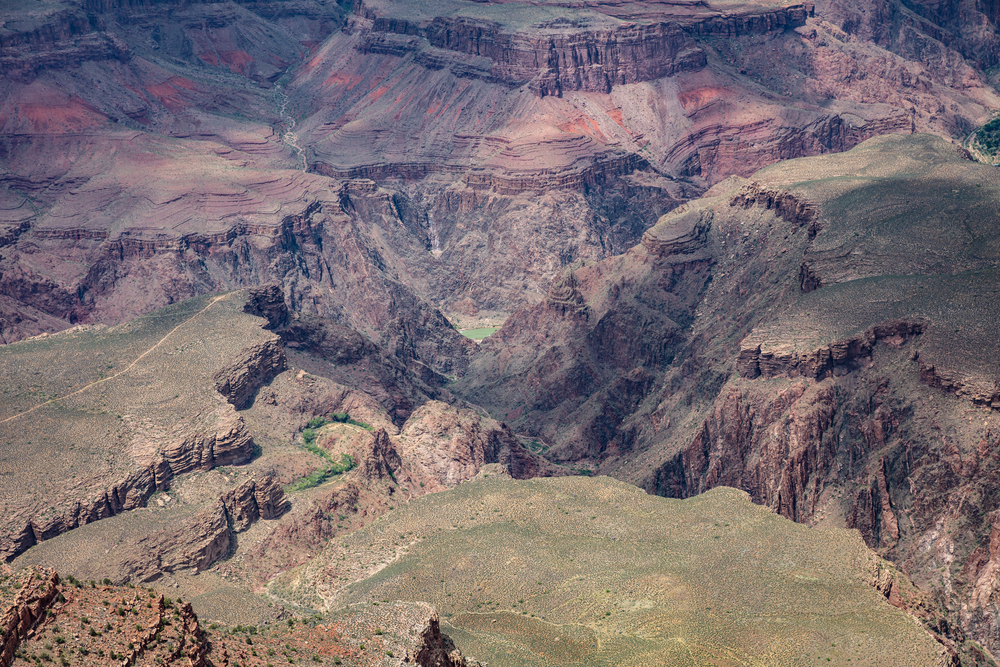
The South Rim Trail offers the most accessible way to experience the Grand Canyon’s grandeur without breaking a sweat. This paved pathway stretches for 13 miles along the canyon’s edge, connecting major viewpoints like Mather Point, Yavapai Observation Station, and Hermit’s Rest.
You can walk as much or as little as you want — think of it like a choose-your-own-adventure book where every chapter ends with a jaw-dropping view. The trail stays open year-round and provides wheelchair accessibility, making it perfect for families or anyone who wants that classic Grand Canyon experience without lacing up hiking boots.
Helicopter Tour
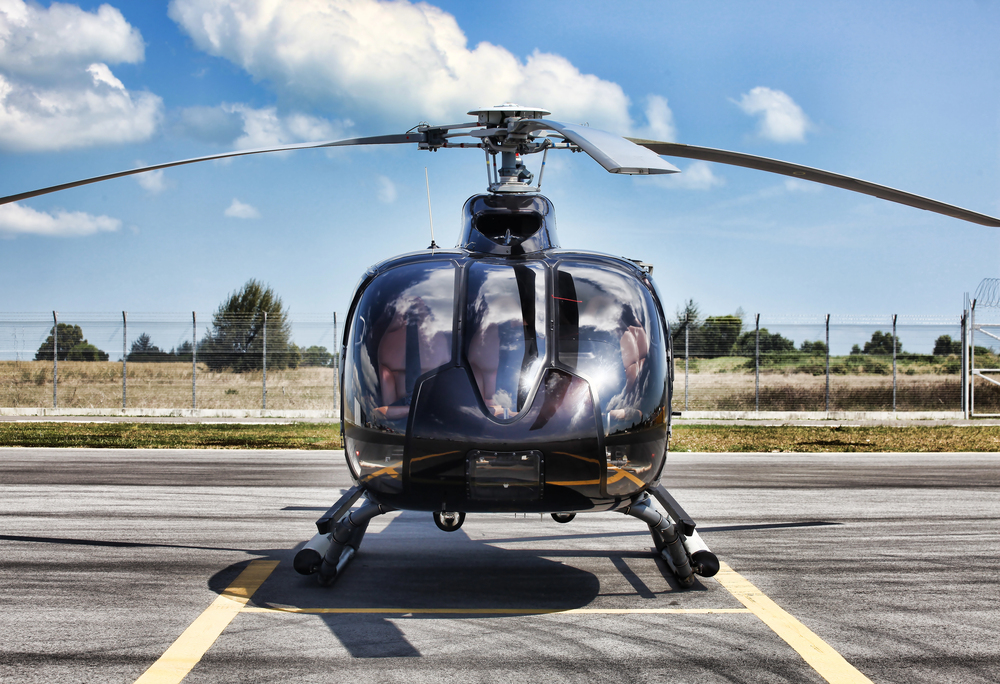
Nothing quite prepares you for seeing the Grand Canyon from a helicopter — it’s like switching from watching a movie on your phone to seeing it in IMAX. These tours typically last 25 to 50 minutes and take you over the deepest parts of the canyon, including areas completely inaccessible by foot.
You’ll soar past ancient rock formations that took millions of years to create as your pilot shares stories about the geology and history below. The bird’s-eye perspective reveals the true scale of this natural wonder in a way that ground-level viewing simply can’t match.
Like Travel Pug’s content? Follow us on MSN.
Colorado River Rafting
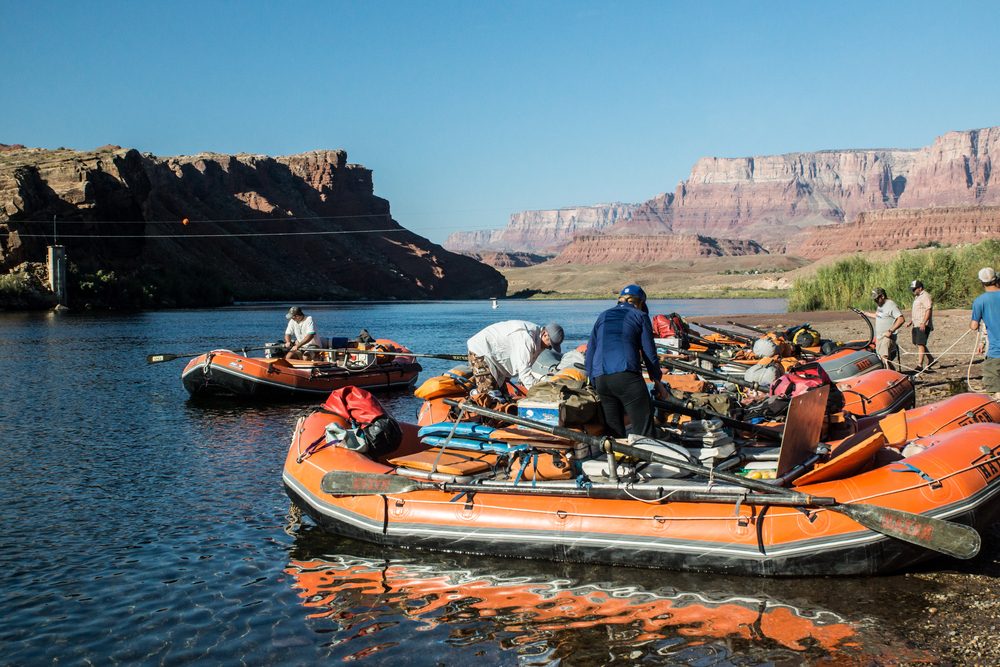
Experiencing the Grand Canyon from the bottom up gives you a completely different appreciation for its massive scale — imagine being an ant looking up at skyscrapers, except these ‘buildings’ are 6,000 feet of layered rock. White-water rafting trips range from half-day adventures to multi-week expeditions that cover 277 miles of the Colorado River.
The river carved this entire canyon over millions of years, and floating through it feels like traveling through Earth’s history book. You’ll encounter rapids with names like ‘Lava Falls’ and ‘Crystal Rapid’ that’ll get your heart pumping, followed by calm stretches where you can spot bighorn sheep drinking at the water’s edge.
North Rim Viewpoints
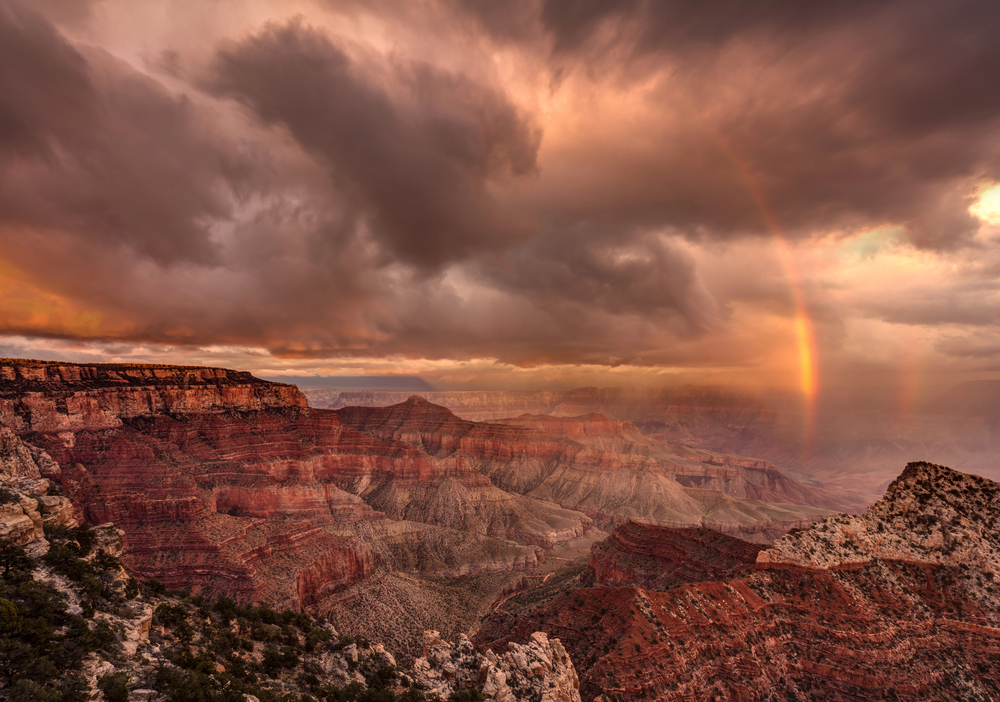
The North Rim feels like the Grand Canyon’s best-kept secret, receiving only 10% of the park’s visitors despite offering some of the most spectacular views. Located 1,000 feet higher than the South Rim, this area provides a completely different perspective of the canyon’s layered rock formations and the Colorado River winding far below.
The drive to get there takes you through dense forests of aspen and spruce trees, creating a mountain cabin vibe that contrasts beautifully with the desert landscape of the South Rim. Keep in mind that the North Rim closes from mid-October to mid-May due to snow, making it a seasonal treasure that feels extra special when you can visit.
Bright Angel Trail Hike
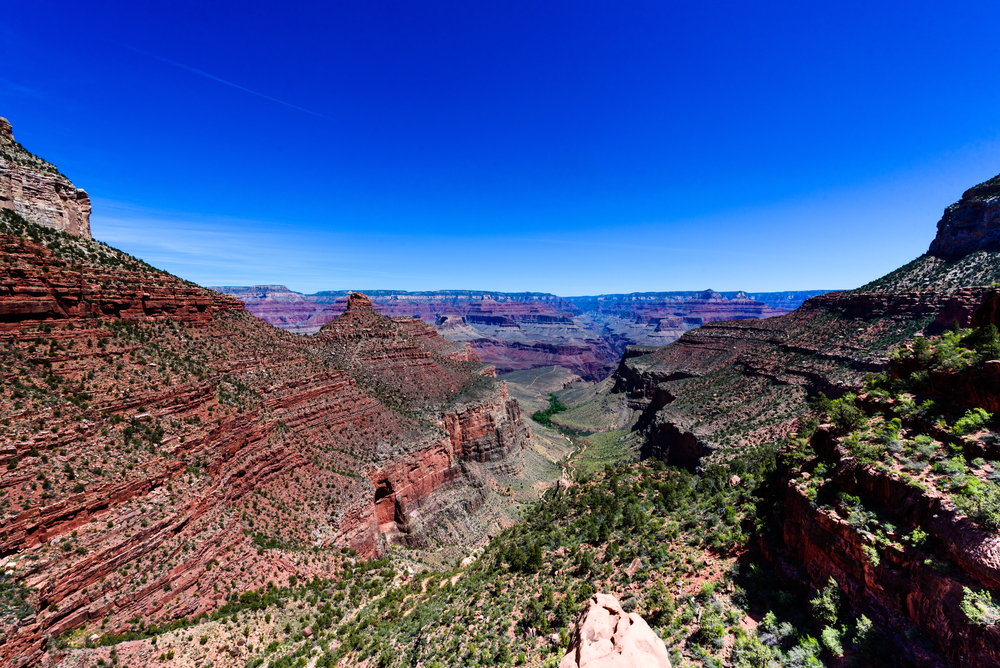
The Bright Angel Trail is like the Grand Canyon’s main highway — well-maintained, clearly marked, and packed with hikers of all skill levels testing their limits against one of America’s most famous trails. This trail descends 4,380 feet over 7.5 miles to reach the Colorado River, passing through multiple climate zones that change dramatically as you lose elevation.
Most people don’t attempt the full hike to the bottom and back in one day (it’s seriously challenging), but even hiking down to the first or second rest house gives you that incredible feeling of being inside the canyon rather than just looking at it. The trail offers rest stations with water and shade, plus some of the most photographed switchbacks in the world.
Like Travel Pug’s content? Follow us on MSN.
Airplane Tours

Seeing the Grand Canyon from an airplane gives you the ultimate overview — literally — covering way more ground than a helicopter while still providing that incredible aerial perspective. These fixed-wing tours typically last 40 to 50 minutes and can show you the entire South Rim, North Rim, and eastern areas of the canyon in a single flight.
You’ll fly over landmarks like the Painted Desert, the Little Colorado River, and remote sections of the canyon that would take days to reach on foot. The smooth ride and large windows make it perfect for photography, and many tours offer headset commentary that explains the geological formations passing beneath you.
Desert View Watchtower
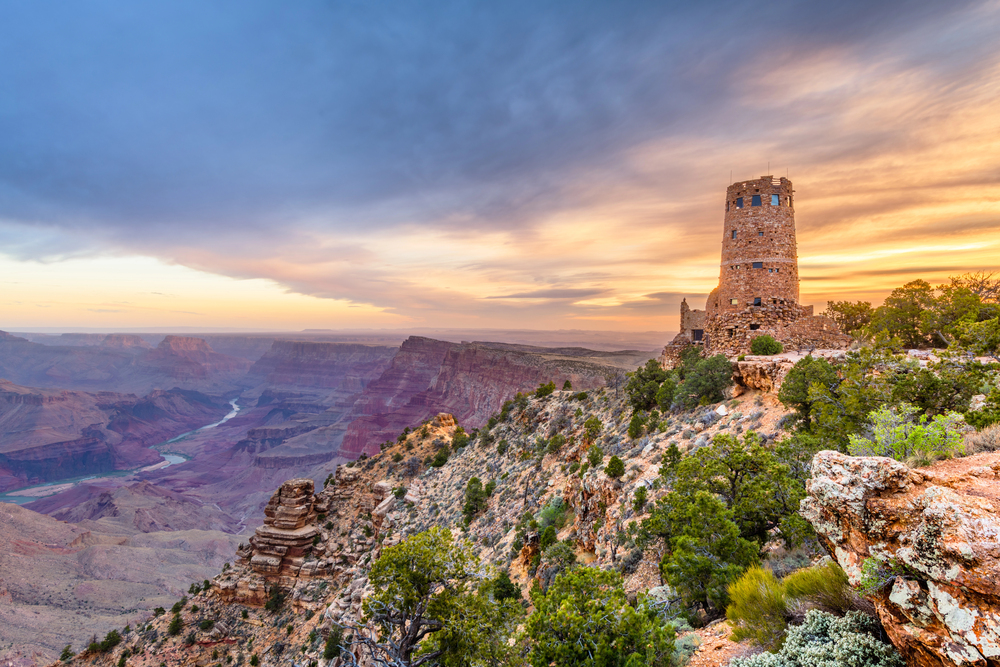
The Desert View Watchtower stands 70 feet tall on the South Rim’s eastern edge, offering 360-degree views that’ll make you feel like you’re standing on top of the world. This stone tower, built in 1932, was designed to mimic ancient Puebloan architecture and houses a gift shop and museum on its lower levels.
Climbing the spiral staircase to the top rewards you with panoramic views that stretch from the Painted Desert to the San Francisco Mountains. The watchtower’s unique position allows you to see the Colorado River making its dramatic bend eastward, creating some of the most distinctive canyon views you’ll find anywhere in the park.
Mule Rides
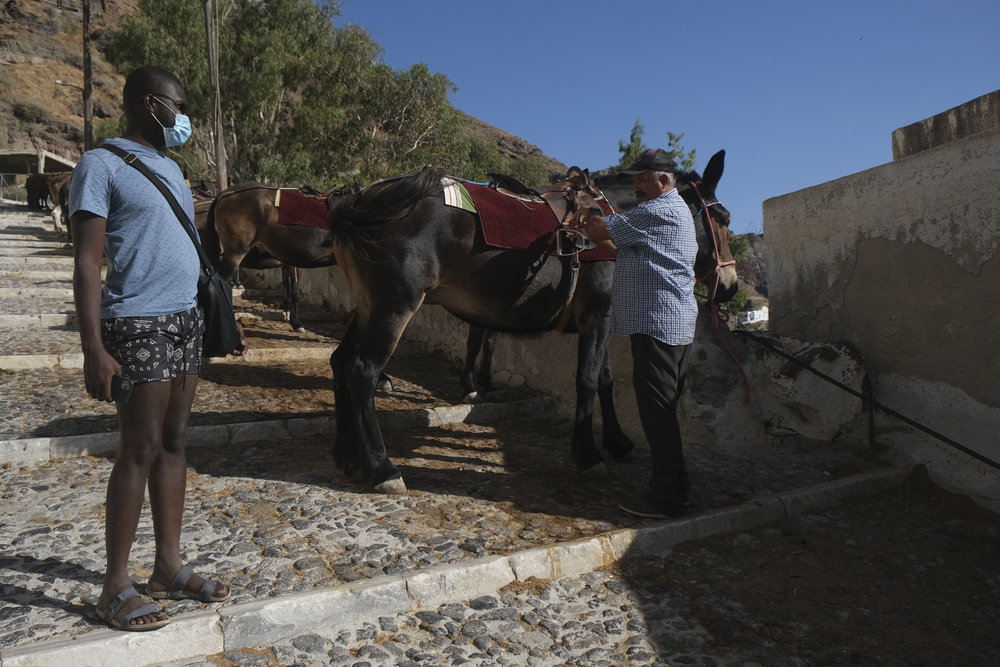
Taking a mule ride into the Grand Canyon connects you to over a century of tradition — these sure-footed animals have been carrying visitors and supplies along these trails since the late 1800s. The mules know these paths better than most humans, having made the journey thousands of times, and their steady pace gives you plenty of time to soak in the changing scenery as you descend.
Day trips take you to Abyss Overlook or along the rim, while overnight adventures can get you all the way to Phantom Ranch at the bottom of the canyon. It’s like having a four-legged tour guide who never gets tired and always knows exactly where to step.
Like Travel Pug’s content? Follow us on MSN.
Havasu Falls
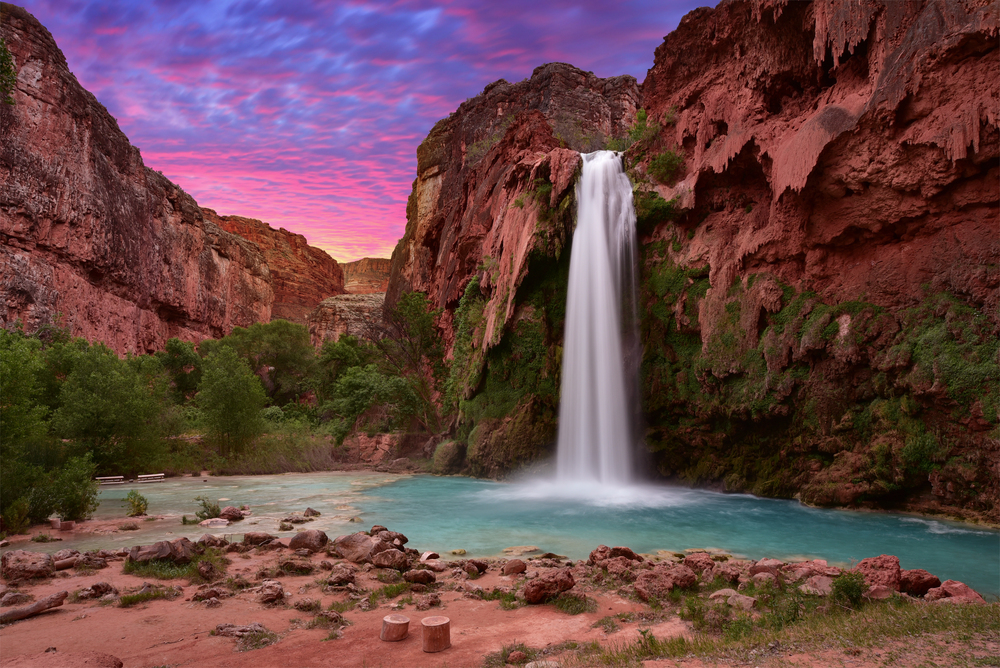
Havasu Falls feels like discovering a hidden oasis in the middle of the desert — picture turquoise waterfalls cascading over red rock cliffs into swimming areas that look more like something from a tropical paradise than Arizona. Getting there requires a challenging 8-mile hike through the Havasupai Tribal lands, but the reward is worth every step of the journey.
The falls drop 100 feet into a series of terraced pools where the mineral-rich water creates those incredible blue-green colors that seem almost too vibrant to be real. You’ll need reservations and permits from the Havasupai Tribe, and most people camp for at least one night to make the trek worthwhile.
Hot Air Balloon Rides
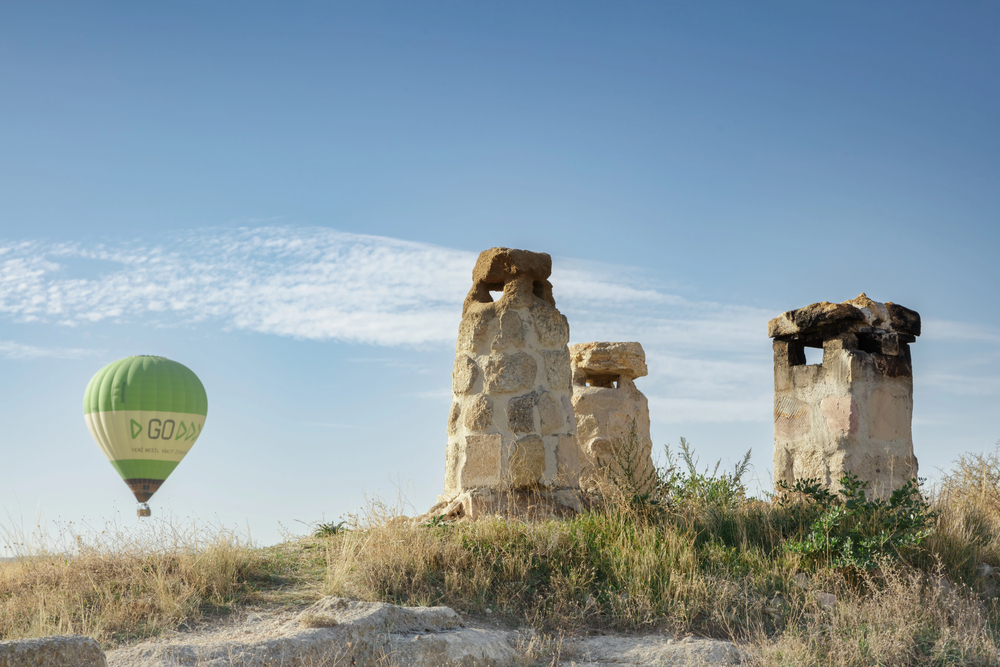
Floating above the Grand Canyon in a hot air balloon creates a peaceful, almost dreamlike experience that’s completely different from the excitement of helicopter or airplane tours. These early morning flights typically launch from areas near the South Rim, offering gentle, quiet perspectives as you drift with the wind currents.
The balloon moves slowly enough that you can really appreciate the intricate details of the rock formations while still getting that incredible bird’s-eye overview. The silence up there — broken only by the occasional whoosh of the burner — creates a meditative quality that makes the whole experience feel almost spiritual.
Rim-to-Rim Hike
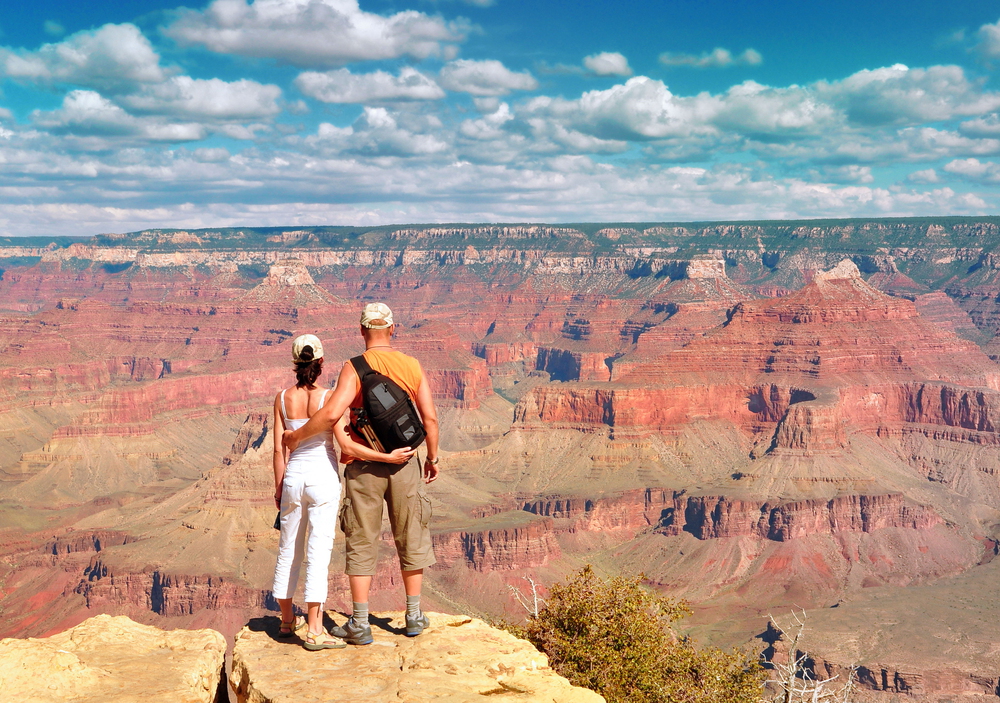
The rim-to-rim hike represents the ultimate Grand Canyon challenge — a 21-mile journey that takes you from one side of the canyon to the other, descending 5,000 feet and then climbing back up 6,000 feet on the other side. Most hikers start at the North Rim (when it’s open), hike down the North Kaibab Trail to the Colorado River, then climb up the Bright Angel or South Kaibab Trail to the South Rim.
The changing ecosystems as you hike create an incredible variety of scenery, from high-elevation forests to desert scrubland to the lush riparian zone along the river. This isn’t a casual day hike — it requires serious preparation, plenty of water, and respect for the desert environment that can be unforgiving to unprepared hikers.
Like Travel Pug’s content? Follow us on MSN.
Antelope Canyon and Horseshoe Bend

While technically not part of Grand Canyon National Park, these nearby attractions offer stunning geological formations that perfectly complement your canyon experience and are just a few hours’ drive away. Antelope Canyon’s narrow slot canyon creates cathedral-like spaces where sunbeams filter down through the carved sandstone, creating some of the most photographed natural formations in the world.
Horseshoe Bend provides a dramatic overlook where the Colorado River makes a perfect U-turn around a massive rock formation, offering a different but equally impressive perspective of the river that carved the Grand Canyon. Together, these spots give you a broader understanding of how water and time have sculpted this entire region.
Phantom Ranch Overnight
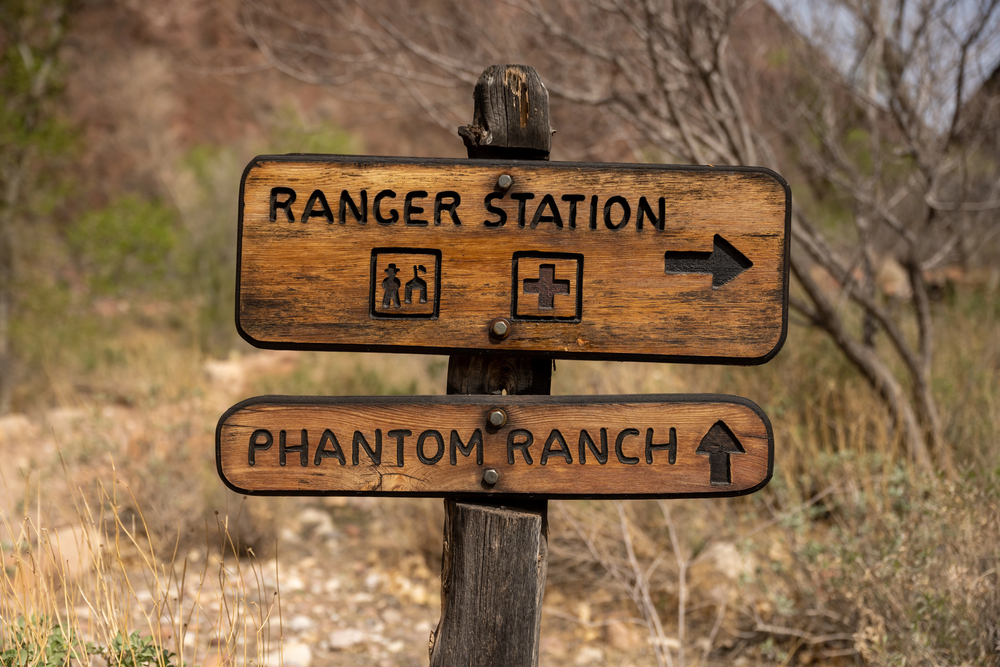
Spending the night at Phantom Ranch puts you in one of the most exclusive accommodations in America — this rustic lodge sits at the bottom of the Grand Canyon, accessible only by foot, mule, or river raft. The ranch was built in 1922 and maintains that historic charm with stone cabins, dormitory-style lodging, and meals served family-style in the canteen.
Waking up surrounded by canyon walls creates an incredible sense of being inside this natural wonder rather than just visiting it. The experience includes watching the canyon walls change colors as the sun rises and sets, plus the rare opportunity to see the Grand Canyon’s night sky without any light pollution.
Skywalk Experience
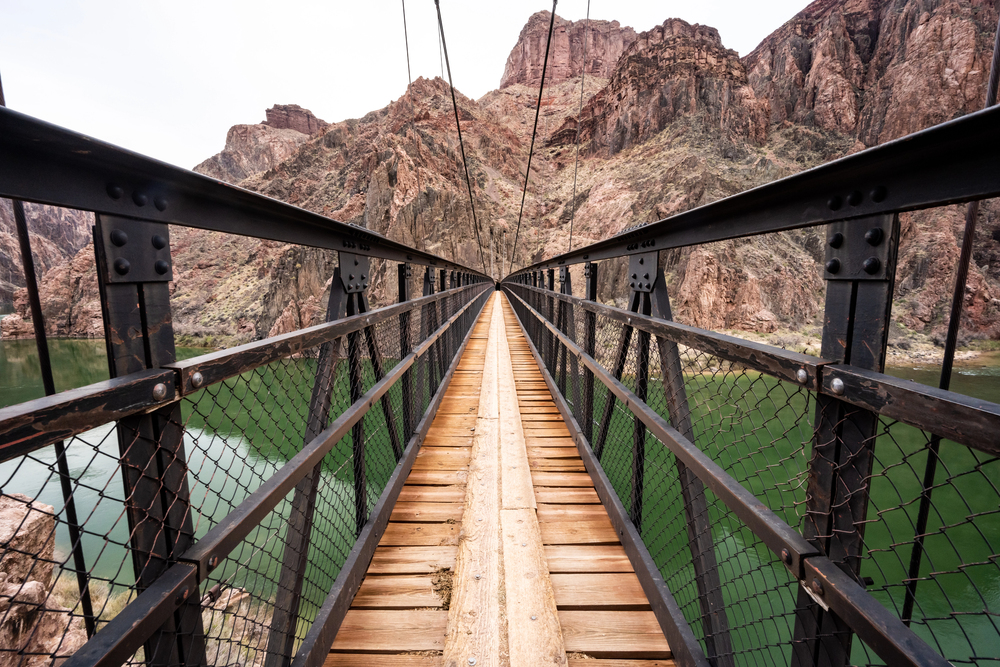
The Grand Canyon Skywalk extends 70 feet out from the canyon rim with a glass bottom that lets you look straight down 4,000 feet to the canyon floor below — it’s definitely not for anyone with a fear of heights. This horseshoe-shaped bridge, located on the Hualapai Tribal lands at Grand Canyon West, creates the sensation of walking on air above one of the world’s most famous landscapes.
The engineering behind this structure is impressive, designed to hold 800 people and withstand winds up to 100 mph. While some purists prefer the natural viewpoints, the Skywalk offers a unique thrill that combines modern engineering with ancient geology in a way that’s both exciting and slightly terrifying.
Like Travel Pug’s content? Follow us on MSN.
Sunrise and Sunset Viewing
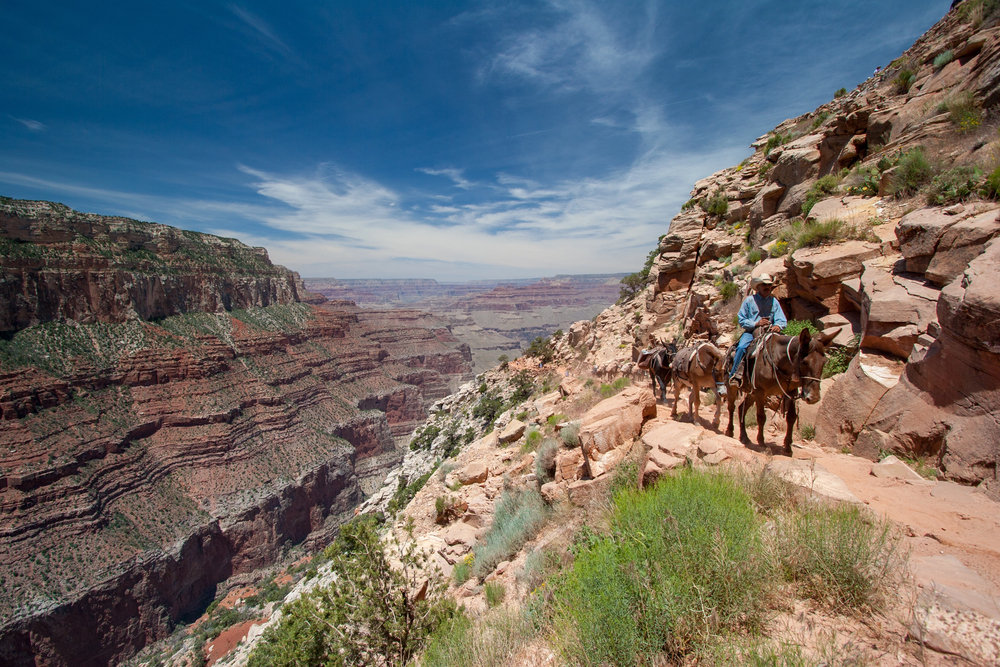
Catching sunrise or sunset at the Grand Canyon transforms the entire landscape into a living painting where the rock layers seem to glow from within. The best sunrise spots include Mather Point, Yaki Point, and Desert View, where you can watch the sun peek over the eastern rim and gradually illuminate the canyon walls in shades of gold, orange, and deep red.
Sunset viewing from Hermit’s Rest, Pima Point, or any of the South Rim viewpoints creates equally spectacular displays as the western light creates long shadows that emphasize every ridge and valley. The changing light throughout these golden hours reveals details and colors in the rock formations that you simply can’t see during the harsh midday sun.
Nature’s Masterpiece Lives On
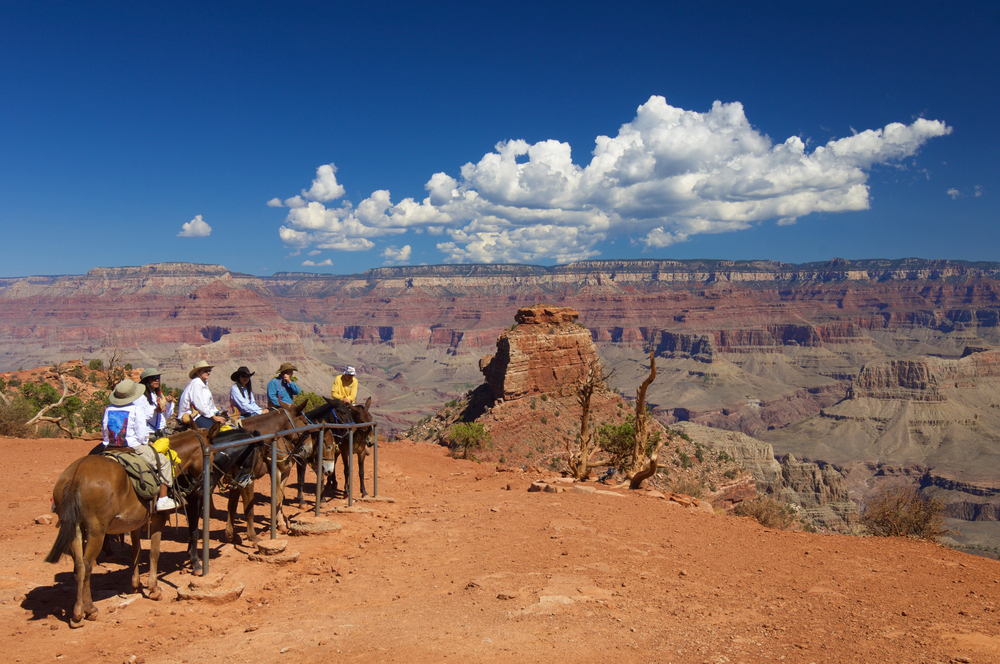
The Grand Canyon continues to evolve today just as it has for millions of years, with the Colorado River still carving deeper into the rock layers at a rate of about one foot every 200 years. Modern visitors can experience this ancient landscape through methods that would have seemed impossible to early explorers — from helicopter tours that provide bird’s-eye perspectives to glass walkways that let you peer straight down into the abyss.
Each viewing method reveals different aspects of this geological wonder, whether it’s the intimate details you notice during a quiet sunrise or the overwhelming scale that becomes apparent from an airplane window. The canyon’s ability to surprise and inspire remains as powerful today as it was when the first humans gazed into its depths thousands of years ago, proving that some natural wonders never lose their ability to leave us speechless.
More from Travel Pug

- 20 Best Beach Towns in the Carolinas
- 13 Destinations Where Tourists Regularly Regret Their Trip
- 20 Things You Actually Get in First Class
- 20 Small Airports With Aviation Museums
- 20 Places in the U.S. That Are Perfect for a Reset Trip
Like Travel Pug’s content? Follow us on MSN.
